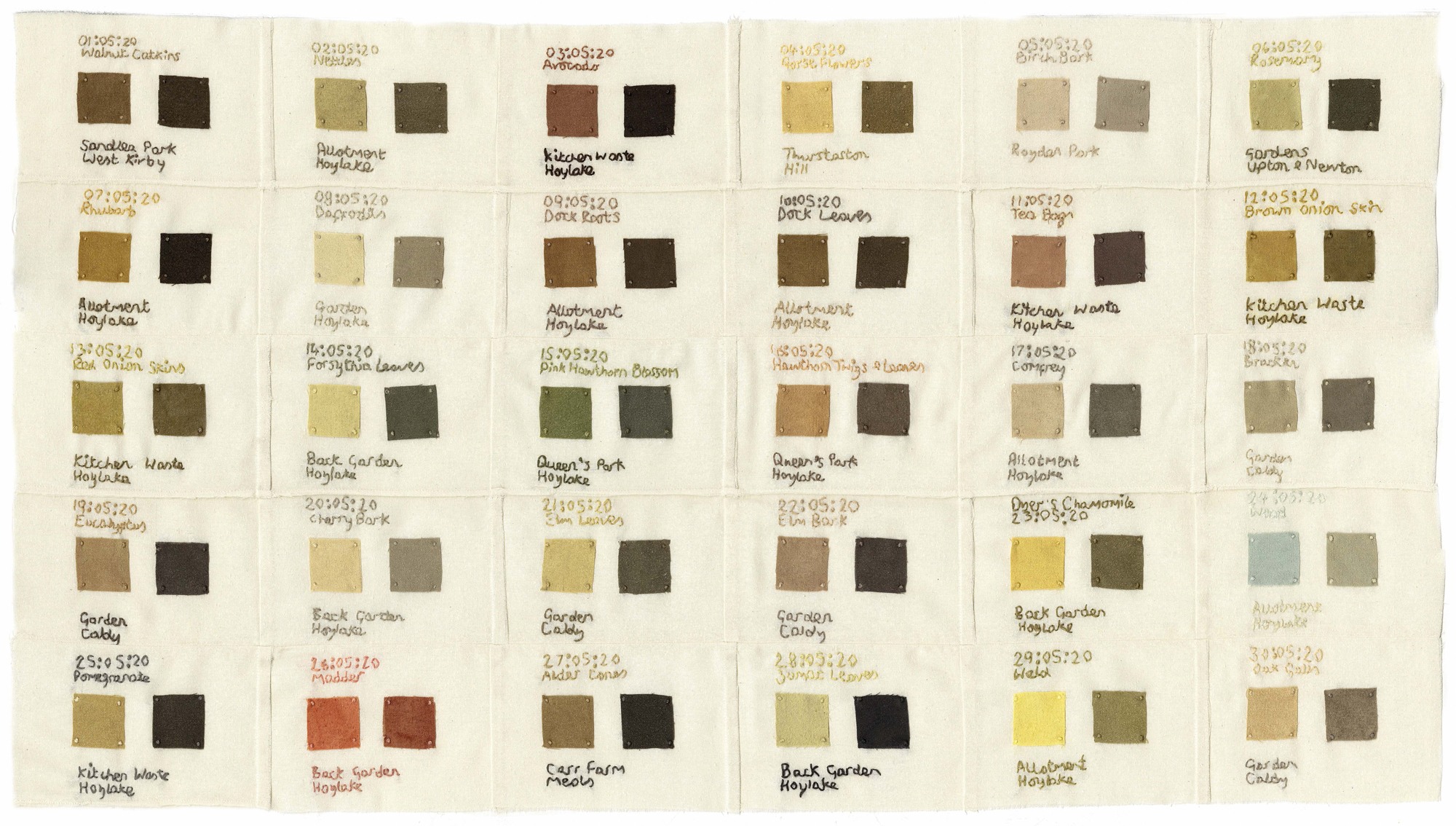Homegrown Homespun
I initiated the Homegrown Homespun regenerative textile project in collaboration with clothing manufacturer and judge on BBC1’s Great British Sewing Bee, Patrick Grant and Laurie Peake, director of cultural development programme SuperSlow Way. Last year we grew a piece of indigo linen from seed to cloth in just 6 months on disused urban land in Blackburn with a team of local volunteers. I hand dyed the weft for our denim using indigo pigment extracted from plants we’d grown in the region. We hope to make a line of Climate BeneficialTM jeans in time for the next British Textile Biennial in October 2023.

Left: The ‘Homegrown Homespun’ community banner, created in 3 days with volunteers under the tutelage of Justine Aldersey-Williams and Cathy Wright. Right: Justine Aldersey-Williams with project partner Patrick Grant in front of the flax and woad field in Blackburn. July 2021.
#aDyeADayInMay


My reaction to the first lockdown last year was to seek solace in nature. May is my favourite month, yet somehow it seems to pass without me feeling I’ve fully appreciated it. Covid-19 afforded me the opportunity to set myself a challenge to forage and create a record of my wonderings and wanderings around my local area. I wanted to experience a ritual that might deepen my understanding of and connection to my local plant allies and to experience rewilding rather than it being a concept in my head. I began my #adyeadayinmay challenge, documenting my process on Instagram as I dyed fabric and thread with a different foraged plant everyday from my daily walks. Slowly hand stitching each plant's name, location and date offered solace at a time defined by an undercurrent of pandemic and climate anxiety. My daily samples were sewn into a folding fabric swatch book that opens to display this unique record of time and place. I then created a 31 day timeline panel showing the unique colours of my local dye plants during May 2020.
Peace Patch for the ‘Same Sea, Different Boat’ exhibition
In response to a call out for contributions to the 'Same Sea, Different Boat' community project, I devised this 'Peace Patch' as a creative ritual designed to induce a state of relaxation. It features 108 knots, each one slowly stitched as a form of meditation using locally foraged, plant-dyed embroidery thread. It serves as a garment mending solution and a meditation tool that helps count mantras with each knot. Affirmations or mantras are often chanted 108 times as this is considered a sacred number within the Hindu and Buddhist traditions. Once used during meditation, the tactile sensation becomes a psychological trigger that when touched again, induces the same psycho-emotional state. This piece was included in a large quilt that has been exhibited at The Museum in the Park, Stroud.
Samples Skirt


I stopped buying new clothes during 2016 to avoid supporting the exploitation of labour and environmental pollution caused by the fashion industry. I decided to raise awareness of renewable dyes by teaching, and ensured all samples were turned into usable items during my workshops. In keeping with this ‘make do and mend’ ethos and as part of my quest to re-wild my wardrobe, I made this skirt using samples from eco print demonstrations and my personal practice of meditative stitching. The dyes used were grown in my dye garden and include the aromatic rhubarb which creates 4 diverse shades using naturally occurring colour modifiers, like homemade rust water and lemon juice.
Re-wild Your Wardrobe
I collaborated with Fashion Revolution on an event at Make Liverpool during their week long campaign #FashionRevolutionWeek. This 'bring+dye' workshop gave people who were new to natural dyeing an opportunity to re-wild an old garment using free dyes extracted from local food and plant waste. I also contacted my local community and revived their old T shirts using their plant and food waste; rhubarb roots, onion skins, avocado skins, apple tree prunings and used tea bags. The colours above include my homegrown madder roots and represent the unique bioregional colours of the Wirral peninsula.








